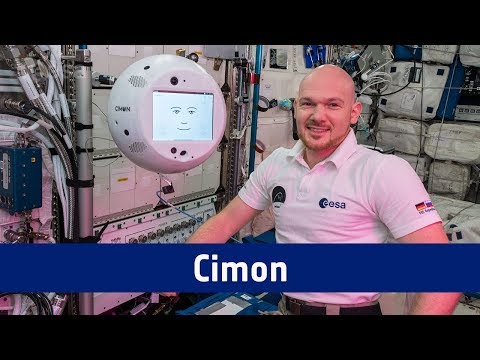Horizons mission – Installing life-support system with astronaut aid mobiPV
In September 2018 ESA’s next-generation life-support system on the International Space Station was installed. The facility recycles carbon dioxide in the air into water that can then be converted into oxygen reducing supplies sent from Earth by half.
Installing the life support rack in NASA’s Destiny laboratory is no easy task as the facility is larger than a human being and weighs over 650 kg on Earth. In addition many cables and pipes need to be connected to the Station’s infrastructure – including a pipe that vents waste methane from the recycling process directly into space.
Alexander set up the air and water drawer of the facility, including part of the Sabatier reactor on 10 September but was given an extra helping hand from ground control with an operational aid called the ‘mobile procedure viewer’ or mobiPV.
Usually an astronaut would have a computer nearby with step-by-step instructions to follow, but anybody who has tried repairing their car or even assembling furniture will agree this way of working has room for improvement – laying down tools to consult instructions is time-consuming and interrupts the work flow.
ESA’s solution to this problem sees astronauts wearing a smartphone on their wrist that connects to the Space Station’s procedure library and shows the instructions on-screen. Alexander could concentrate on the work at hand, without going back and forth to the computer.
Three sites in Germany were all connected and had full awareness of the installation as Alexander progressed step-by-step: the Columbus Control Centre near Munich, the European Astronaut Centre near Cologne and the facilities’ manufacturer Airbus in Friedrichshafen.
The mobile procedure viewer might seem simple but space operations allow little room for error and overcome technological challenges.
As the Space Station orbits Earth it loses radio contact for periods of up to eight minutes at a time. Alexander continued working during the periodic loss of signal but once communications were reestablished, mobiPV automatically and quickly brought all four teams up to speed.
As humans venture farther from Earth such as to a lunar gateway, life-support and communication with ground control will only become more challenging but last week’s operations on the Space Station are paving the way for exploration of our Solar System where greater autonomy and hands-free operations are important for planetary operations.
Follow Alexander and the #Horizons mission on social media via http://bit.ly/AlexanderGerstESA and on http://bit.ly/HorizonsBlogESA.
★ Subscribe: http://bit.ly/ESAsubscribe and click twice on the bell button to receive our notifications.
Check out our full video catalog: http://bit.ly/SpaceInVideos
Follow ESA on Twitter: http://bit.ly/ESAonTwitter
On Facebook: http://bit.ly/ESAonFacebook
On Instagram: http://bit.ly/ESAonInstagram
On Flickr: http://bit.ly/ESAonFlickr
ESA is Europe’s gateway to space. Our mission is to shape the development of Europe’s space capability and ensure that investment in space continues to deliver benefits to the citizens of Europe and the world. Check out http://www.esa.int/ESA to get up to speed on everything space related.
Copyright information about our videos is available here: http://www.esa.int/spaceinvideos/Terms_and_Conditions





It's really awesome that we can now follow along with many forms of declassified experiments sent from the Public Domain,… I'd agree, This is one Evolvement of our Humanity which will take us further than anyone or anything before us. The only Question is,… Does the World want to Join Humanity for this very rewarding adventure or sadly do they want NO Part in it, because they Don't Understand it?
Nexus 5 <3
I like how they're essentially making YouTube tutorials for ISS hardware. Incidentally, could you please put those animations on YouTube ESA?
Nice little "ratschn"
wow! did they make a call to get the man to come and install it! thats great service…er ta! ….life is short…enjoy!!!
Sorry but what happens if this Phone on his wrist explodes?
One thing I've always wondered… isn't it dangerous to have all those cables and wires and tiny machine things so close to the walls – and open on full display?
For some machinery I imagine its probably recquired if they want to check things quickly, but I can't help but wonder what would happen if anyone were to float past such a machine too quickly and too closely and accidentally rip one of those many wires…
(Not specifically talking about this device but rather… all those devices one can see almost everywhere on the ISS )
I see your mobile device giving you information and checklists on paper for the reentry. how much you use digital information for your daily work?
When the fallout pipboy inspired astronaut scientists.
Animation video torturials is genius.
1:10 the model/brand of wrist smartphone holder?